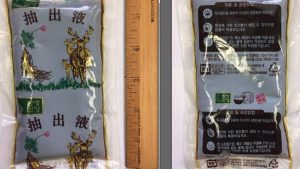My experience as a dishwasher was short lived. When I was in grad school studying restaurant food safety I volunteered at a local restaurant. I wanted to know what it was like, even just a little bit, to be a food handler – figuring I’d be better at food safety if I understood the pressures of the job. I spent most of my time in the dish pit, listening to Tom Petty working with fun folks, who were into lots of different substances.
One day, one of my last, I was doing salad prep, and trying to wash my hands between handling lettuce (with bare hands) and dirty dishes. The chef yelled at me because we didn’t have time to waste – and I skipped the whole handwash process.
That’s my self-reported story. Researchers in the UK (Jones and colleagues) published a paper a couple of weeks ago about the self reported behaviors of chefs, managers and catering students. They didn’t fare much better than I had. And surveys have their limitations.
Foodborne disease poses a serious threat to public health. In the UK, half a million cases are linked to known pathogens and more than half of all outbreaks are associated with catering establishments. The UK Food Standards Agency (FSA) has initiated the UK Food Hygiene Rating Scheme in which commercial food establishments are inspected and scored with the results made public. In this study we investigate the prevalence of food risk increasing behaviours among chefs, catering students and the public. Given the incentive for respondents to misreport when asked about illegal or illicit behaviours we employed a Randomised Response Technique designed to elicit more accurate prevalence rates of such behaviours. We found 14% of the public not always hand-washing immediately after handling raw meat, poultry or fish; 32% of chefs and catering students had worked within 48 hours of suffering from diarrhoea or vomiting. 22% of the public admitted having served meat “on the turn” and 33% of chefs and catering students admitted working in kitchens where such meat was served; 12% of the public and 16% of chefs and catering students admitted having served chicken at a barbeque when not totally sure it was fully cooked. Chefs in fine-dining establishment were less likely to wash their hands after handling meat and fish and those who worked in award winning restaurants were more likely to have returned to work within 48 hours of suffering from diarrhoea and vomiting. We found no correlation between the price of a meal in an establishment, nor its Food Hygiene Rating Score, and the likelihood of any of the food malpractices occurring.











